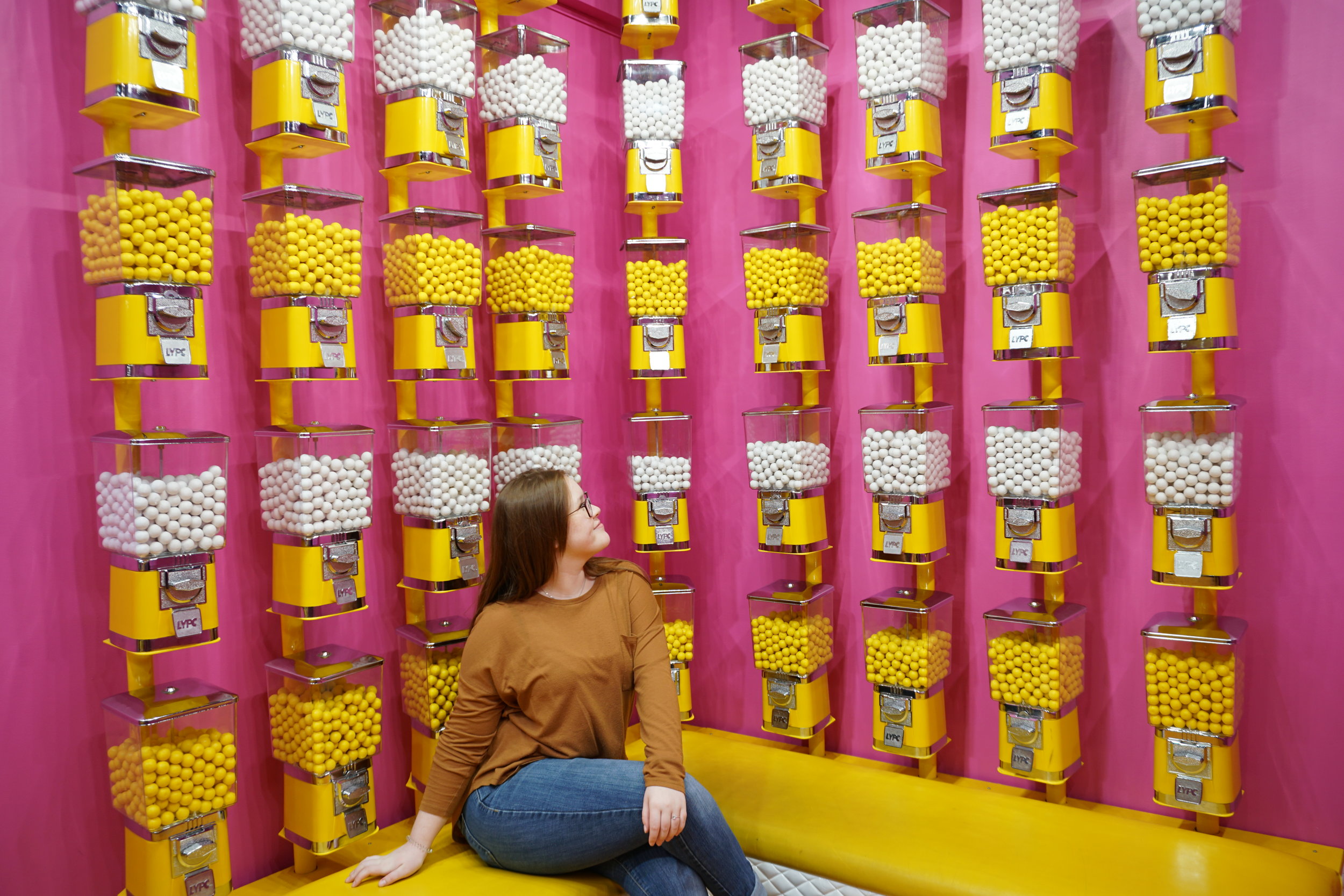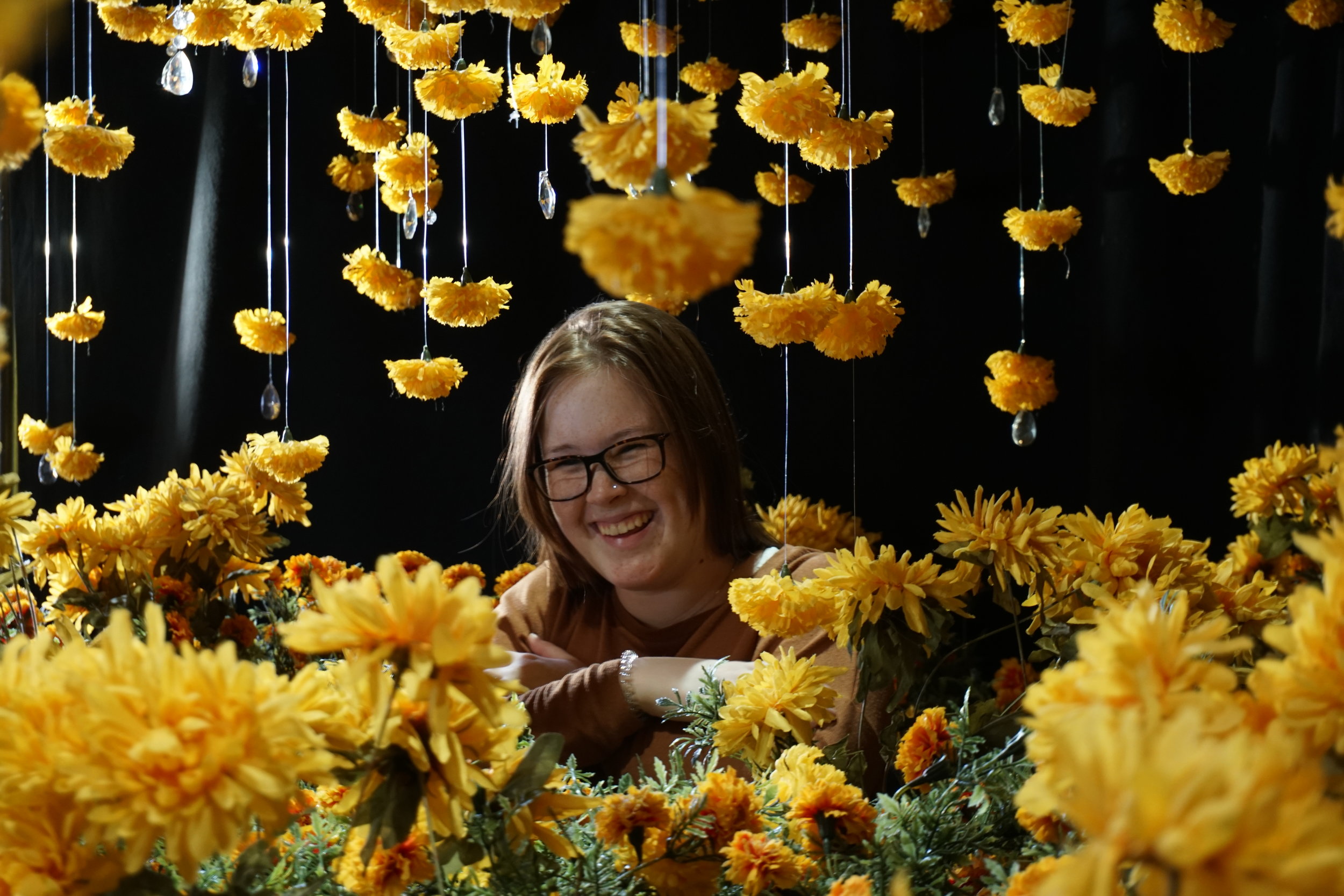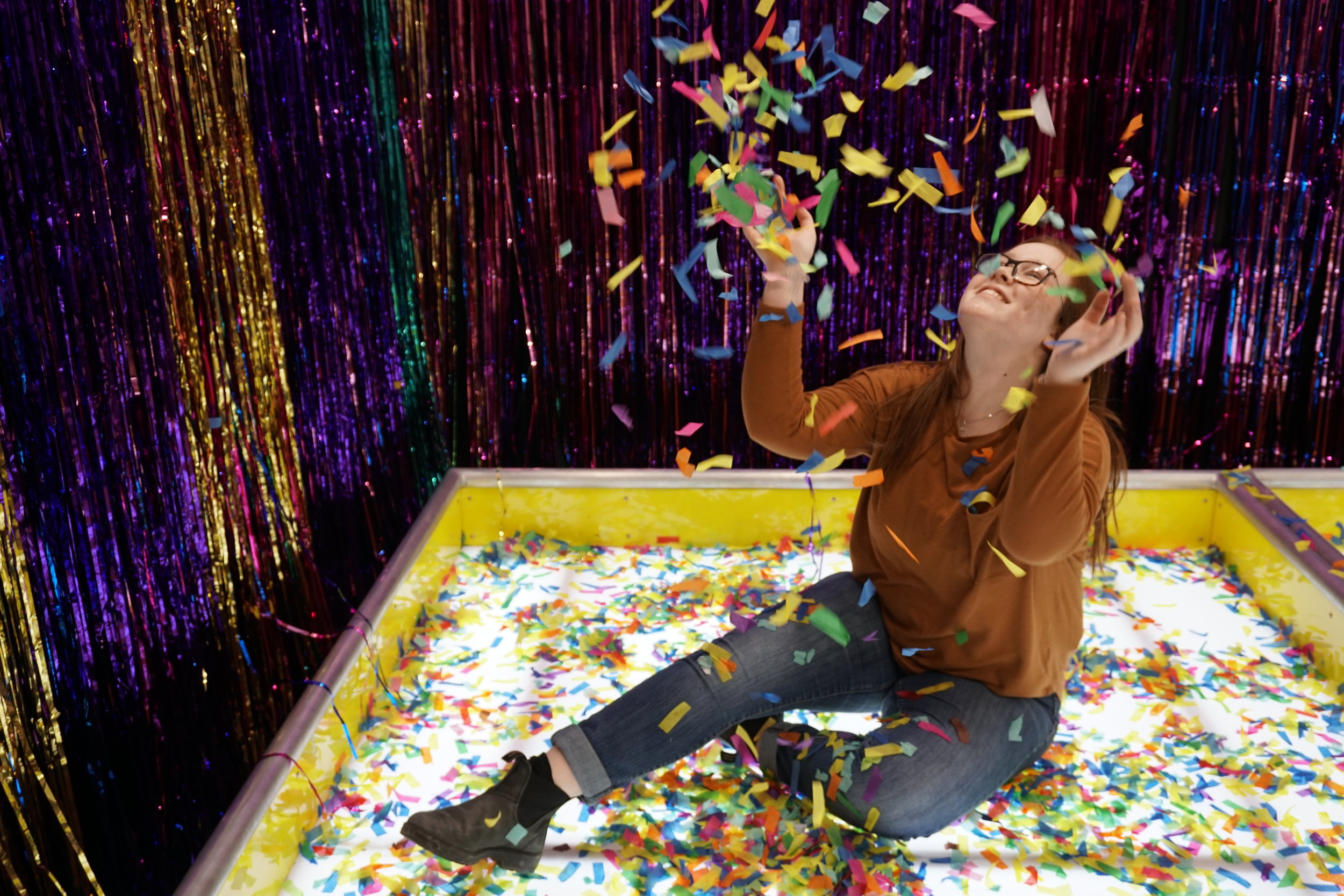Toronto’s landscape has tall and low buildings, narrow and wide streets, houses, parks and more. Within the city's structure, there is also the opportunity for art. The art put onto the street and for the public is a way to connect, impact and change our shared spaces. The women who create street art in Toronto consider their works' potential when creating.
Connecting to those we know and those we don’t
“Community arts is a healing tool,” said Jasmine Vanstone, “To create conversations, to help with storytelling.”
Vanstone is a Jamaican-Canadian multi-disciplinary artist based in Toronto; however, that does not sum her up entirely.
“In my bio, there are like three titles,” she said with a faint giggle.
Despite talking in a soft voice that made me want to lean my ear into the speaker over a Zoom call, Vanstone's life as an artist is bold. From getting a Bachelor of Fine Arts from York University and graduating from a post-grad arts management program at Centennial College to winning countless awards and working in many positions surrounding community engagement and art education, her passion spreads far.
One of Vanstone's projects was in 2022 when she participated in the Future Without Oppression mural in Kensington Market. She described the mural as a collaborative project with Black artists who united to express their ideas and visions of a world without anti-black racism and other oppression. Vanstone worked on the ground mural, painting on the street itself.
The project allowed her to make art of her choice. Vanstone knew she did not want to paint Black bodies and explained she “didn’t want people to step on representations of Black bodies.”
Instead, she used symbols: a heart hugging the Earth with a rainbow of pink, blue and yellow spiralling throughout. She also painted a bee that was “pollinating” another artist's work.
The initiative became a space that hosted those more than surface-level exchanges, and Vanstone explained these spaces are rare. People would walk by and ask, “What does this mean to you?” allowing her to engage with fellow artists and passers-by in the area. Vanstone engaged with an entire community “to create a cohesive story.”
Creating with and for others is something familiar to Vanstone. She was a part of a mural done at the Finch TTC Station. As Vanstone talks of this mural, a smile stretches across her cheeks, and her eyes brighten. “That was so amazing,” she says warmly with an upward gaze that seems to direct the words at the world.
The brown brick wall of the TTC’s Finch subway station she helped paint wasn’t just a wall to her. Vanstone grew up near the station. She often passes through the neighbourhood and remembers waiting for a bus across the platform. Not wanting to “accidentally stare” at people, Vanstone would stare at her surroundings: at the little shop with Korean snacks or the bus waiting area. She’s re-connected with those who’ve seen the art and reached out to her.
Her work on the subway station project allowed Vanstone to connect with neighbours and her community
“It was uplifting my community through beautifying the space,” said Vanstone.
Working with our shared city spaces
Uplifting communities and reclaiming spaces are consistent purposes of the street artists I spoke with. Even if people who see street art don’t know the artist or the exact context of the piece, it does not render the art invaluable. The possibility for a piece of street art to move someone is still there.
Vanstone explained that recognizing an art piece's beauty can make people see other beautiful aspects of their lives or environments. “It becomes more about building a sense of gratitude and gratefulness,” said Vanstone.
Changing our cities’ environment is a concept artist Monica Wickeler also thinks about.
Wickeler loves to put their art into the city's spaces. Their public work can be found in laneways, playgrounds, wading pools and, as her bio says, “anything that stays still long enough.”
Wickeler explained that street art is an opportunity to reclaim an environment. She believes that many spaces in the city are underused and brought up the “broken window effect.” For example, say a window is broken and goes unfixed, or a pile of litter goes uncleaned. , After a while, more windows will break, and more litter will accumulate. However, according to Wickeler, murals can help change this cycle.
“If you fix the window, plant some community gardens, paint some murals,” said Wickeler over a Zoom call, “Suddenly, this becomes a vibrant community space.”
They explained that a “vibrant” space can make an area more used and be a door to meeting neighbours and one's community. Wickeler acknowledged that even living in a city as populated as Toronto’s three million, people can still be isolated.
One of Wickeler's projects was a collaborative effort between artists behind the Art Gallery of Ontario in a laneway. For Wickeler's part of the mural, she painted an oversized, chunky “Shrek,” like blue hands holding a curled-up sleeping orange fox. She also added her Instagram handle to the bottom. A year after the project, they got a DM. The woman who messaged her explained that she walks by the mural almost daily with her daughter on their way to daycare. Whenever her daughter approaches the mural, she says, “Sshhhh, the fox is sleeping.”
Wickeler doesn't often get feedback on her street art. She creates murals and then leaves them for the city, but when this woman reached out, it was a connection and realization that her art was impacting people's spaces. Wickeler hopes her art makes people think, and they use bright colours to have a positive impact. She compared her street art to little “cookies,” around the city that add an extra layer of joy to people's days.
“I want them to enjoy their urban space,” they said.
Another project Wickler participated in was The Laneway Project, a way to help reclaim some laneways in local Greater Toronto Area neighbourhoods. She helped paint a healing corridor in Central Hospital Lane with artist Nyle Miigizi Johnston. They created a gateway storytelling mural at the entrance of the healing corridor.
The impact public art can have
Keitha Keeshig-Tobias Biizindam explained that her murals are “right out there in the public, and it only takes a few seconds for all the knowledge in that picture to get put in your brain.”
Biizindam is an Indigenous, Ojibwe and Delaware multidisciplinary artist based in Toronto. Right at the beginning of our conversation, she was direct about a large part of who she is.
“I do a lot of art,” she said, smiling as she spread her hands across the screen over Zoom. Art has always been a part of her life, and it was one of the fundamentals of her childhood.
When she was younger, “toys, cakes and candies” were a no, but the two things she was guaranteed to have were books and art supplies. Her passion for art allowed it to become a tool she uses to reclaim Indigenous sciences.
She recounted, with a rising voice, how her younger cousins have approached her with stories about the discriminatory things they’ve been told in school: Indigenous people don’t have science and don’t understand math. Her artwork is partly aimed at changing these outdated and stereotypical ideas. To Biizindam, murals are a way to do this.
Biizindam puts reclamation of Indigenous science into her work so everyone who passes by can think of Indigenous people in a scientific and modern framework. With little hesitation, she listed the depth of Indigenous knowledge, from topics such as animals to nature to food. She uses her work to clarify that Indigenous people are here and have contributed to our world.
In Trillium Park, Biizindam did a mural covering the four sides of a shipping container. The walls of the container are filled with pink, purple, yellow and black. However, one side is covered in white hexagons of the chemical structures of Indigenous scientific discoveries pre-contact, “so people can see something that is very scientific,” explained Biizindam.
She has left enough information in her paintings so people who witness them can research themselves. “The knowledge increases and gets bigger,” she said.
Another side of Biizindams’ mural says ‘Culture Back’. It has the silhouette of a mother and child —The mother's dark hair forms around them both like an Anishnaabe dreamcatcher, holding the mother's nightmares to be evaporated by the sunlight like dew drops.
“It talks about all those nightmares that scare Indigenous women,” she said, “It would be catching such things as birth alerts, residential school, not being able to afford your child's medical treatment.”
Biizindam creates artwork with strong messages and puts them to the public for a reason. Her artwork aims to make people reflect and learn, and she embraces creating and displaying her work in busy environments like Nuit Blanche and her Trillium Park mural.
“I’m trying to change this world,” said Biizindam firmly. “I’m trying to turn this world into a place where my children feel safe to be whatever they want to be.”
Educating people is one element of her mural work, but eliciting emotions is another. Much of Biizindam's murals feature women at the forefront, and she paints their bodies in specific postures to impact viewers. Drawing people in certain poses that indicate feelings, a head leaning downwards or arms spread far as if in flight, are potent symbols people can relate to and feel.
Colombian artist La Pupila also thinks of making people feel certain emotions. La Pupila is a visual artist based in Toronto. Despite being a tattoo artist for five years and having completed many murals and exhibited her work in a gallery, she struggles with the confidence to call herself an artist.
“Ahhh!” she laughed when I asked about her title over a Zoom call.
While she may not be able to confidently tell me she is an artist, her face and body said a lot. Her arms each have black-inked lined shapes of tattoos, and her eyes widen, animating her face as she speaks of her work.
Much of her street art is in black and white and features faces. Dark black eyebrows and intense eyes that stare at you from the wall are some characteristics of La Pupila’s mural art. She has also painted city garbage cans in bright yellow and pink, with eyes peering up from the lids. The garbage bins are a playful way of brightening a community, and the faces she paints, she hopes, make people feel a tenderness.
“You do it, and it's for the street,” said La Pupila with a smile. “Anything can happen.”
The artists' work goes out to the city and everything within it.



















































































































